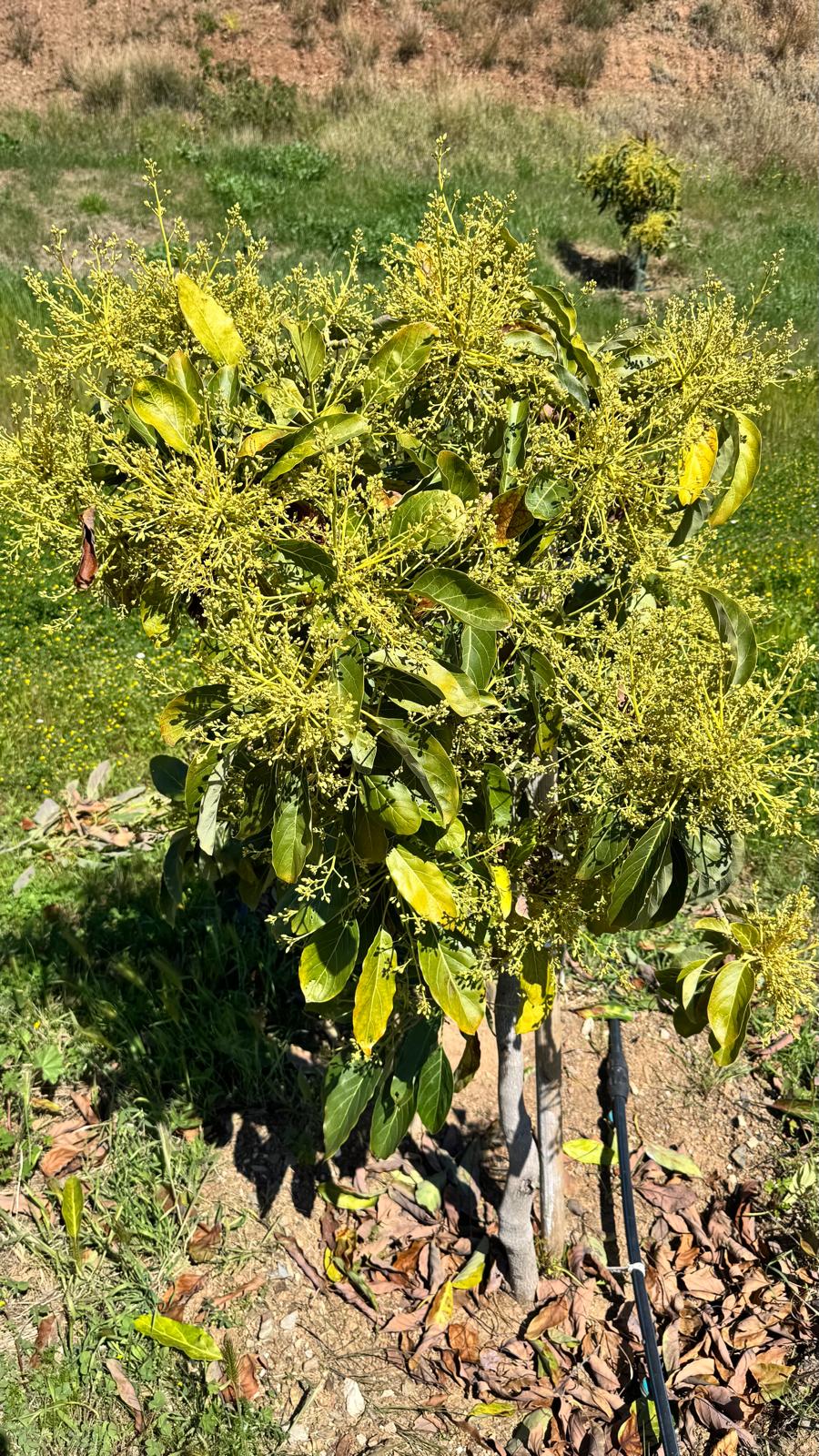
Avocado blossoms in spring 2025
Share
The Fascinating Avocado Bloom: How to Influence Its Success and Avoid Its Risks
Avocado flowering is one of the most important stages in the plant's life cycle, and its success directly determines fruit production. Understanding how to influence this process and avoiding the factors that hinder it is crucial, especially for those who grow avocados in commercial settings. What makes this stage so delicate? What factors promote it and which ones put it at risk? We explain here.
The most important keys to flowering.
Avocado flowering is a complex process highly influenced by its environment. Three key aspects define this key stage:
-
Flowering Period : Avocados exhibit a type of flowering known as protogynous dichogamy , meaning the flowers alternate between male and female phases. This promotes cross-pollination, but also requires synchronization between nearby trees. Flowering typically occurs in spring, although its exact onset depends on external factors such as temperature and light availability.
-
Effective pollination : Avocado flowers require cross-pollination, meaning they must be pollinated by another avocado tree. To facilitate this process, it is essential to maintain a high density of natural pollinators, such as bees. Without them, fruit set would be minimal.
-
Fruit set : Although most blossoms do not develop into fruit, fruit set depends on factors such as favorable weather conditions and the absence of water stress. Of the thousands of blossoms produced by a single tree, only a small percentage develop into viable avocados.
Factors that favor avocado flowering
Successful avocado flowering depends on carefully managed conditions. Here are some essential steps to take to ensure an optimal harvest:
-
Ideal Climate Conditions : Temperature is a critical factor. Avocado thrives when temperatures range between 18°C and 25°C during the flowering period. Very cold nights or extremely hot days can cause significant damage.
-
Proper irrigation and soil management : Avocados need an adequate amount of water; neither too much nor too little. The soil must have good drainage capacity, as the roots of this plant are sensitive to waterlogging. Moderate but consistent watering ensures the plant can produce healthy flowers.
-
Pollinators in action : Encouraging the presence of bees in the crop, by maintaining nearby hives or providing natural food sources, is vital to ensuring the exchange of pollen between flowers.
Factors that harm flowering
Unfortunately, the flowering process also faces threats. Identifying and preventing these risks can make the difference between successful production and a failed harvest:
-
Stress from extreme temperatures : Frost or temperatures above 30°C can burn floral tissue, making pollination difficult.
-
Pests and diseases : The presence of insects such as mites and beetles, as well as fungal diseases, can directly damage flowers. It is important to implement preventive phytosanitary control programs to minimize these risks.
-
Water stress or nutrient deficiency : An undernourished or poorly hydrated tree will respond by reducing the quality and quantity of the flowers it produces. This includes reduced pollination efficiency and fruit set.
Recommended foliar treatments to optimize flowering and fruit set
Implementing timely and specific foliar treatments for each flowering stage is key to maximizing avocado productivity. Here's a recommended schedule:
Beginning of flowering
Month: March
- YaraVita FRUTREL : 5 cc/lt
- YaraAmplix FLOSTREL : 2.5 cc/lt
Flowering and fruit set
Month: April 1st
- QUELAFERT CURTENING : 2.5 grs/lt
- YaraAmplix OPTITRAC : 2.5 cc/lt
At 21 days:
- QUELAFERT CURTENING : 2.5 grs/lt
- YaraAmplix OPTITRAC : 2.5 cc/lt
Fruit setting - Beginning of fattening
Months: May-June
- YaraVita FRUTREL : 5 cc/lt
- YaraAmplix FLOSTREL : 2.5 cc/lt
- RENEWAL FATTENING : 3 cc/lt
These products are formulated to provide key nutrients during crucial stages of avocado development, such as zinc, boron, and molybdenum, which are essential for efficient fruit set and early fruit development.
Conclusion: Care matters more than it seems
Avocado flowering is a delicate process that directly reflects how the grower has treated their plants throughout the rest of the year. When conditions are optimal, the trees reward with a bountiful harvest. However, ignoring factors such as weather, irrigation, or pollinators can lead to irreversible problems.
To achieve maximum productivity, it's essential to plan strategies that minimize risks, include foliar treatments, and maximize favorable factors. Because in the world of avocados, every blossom counts.
